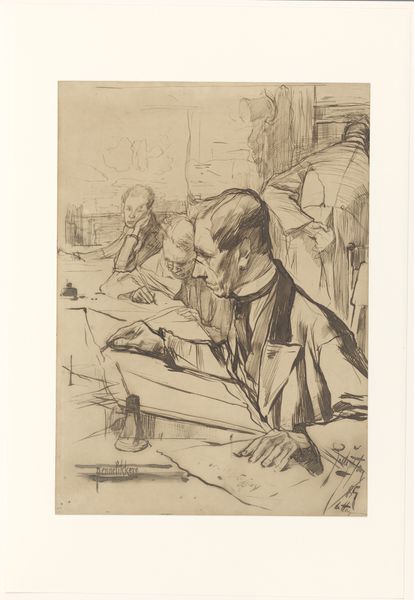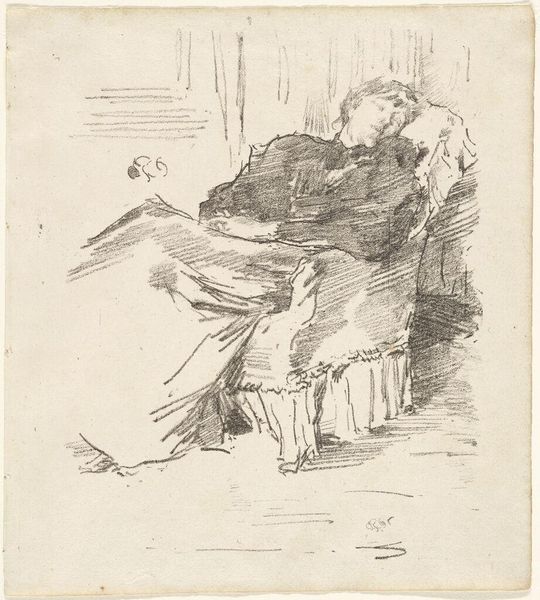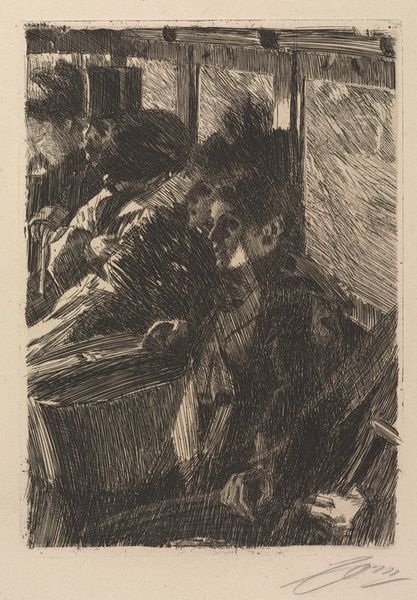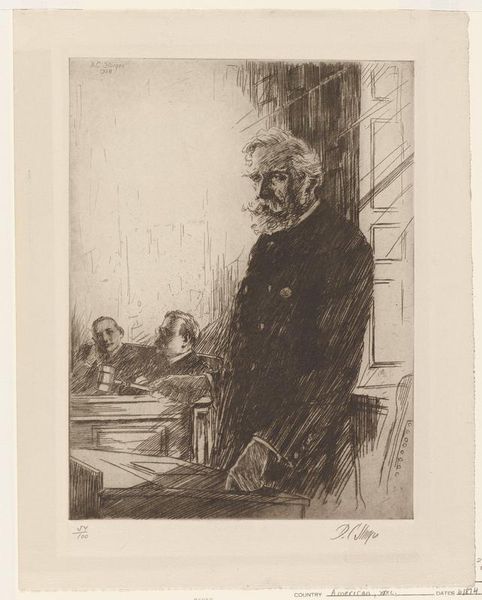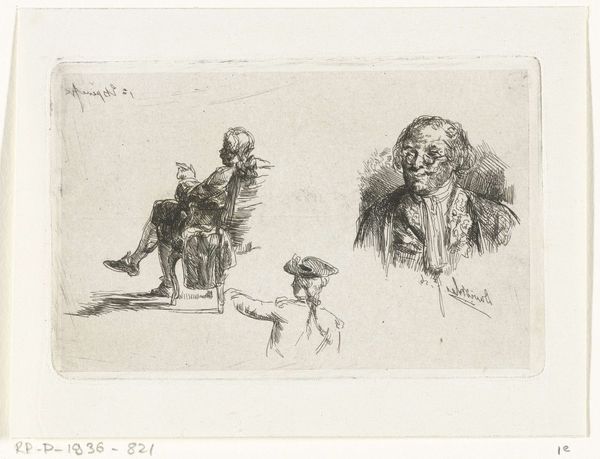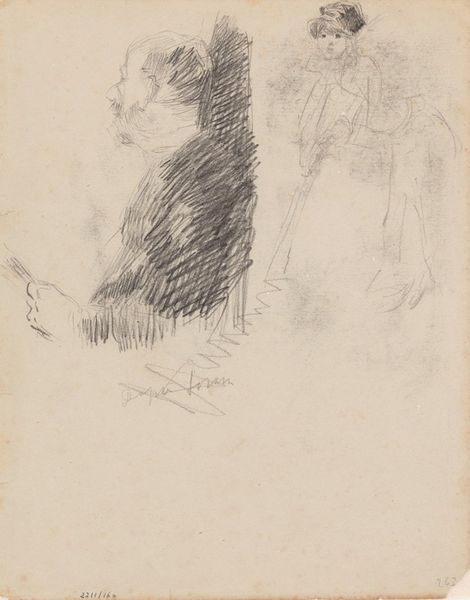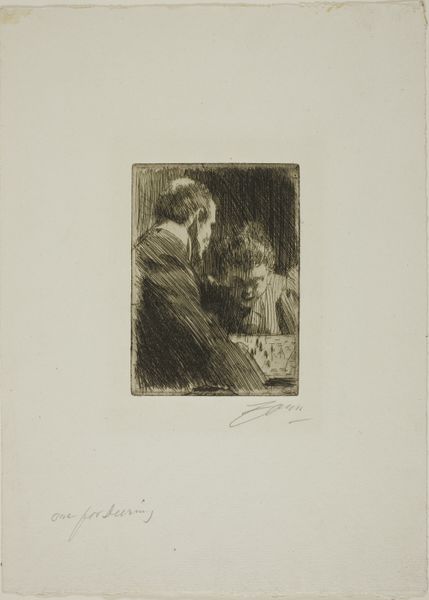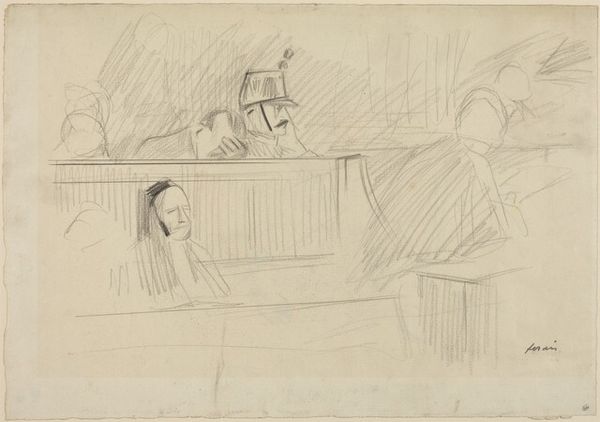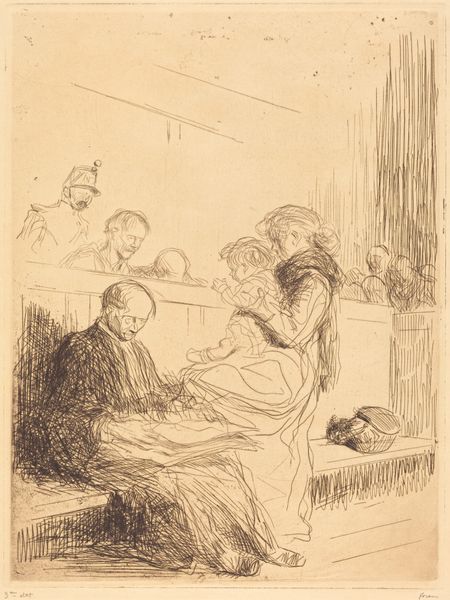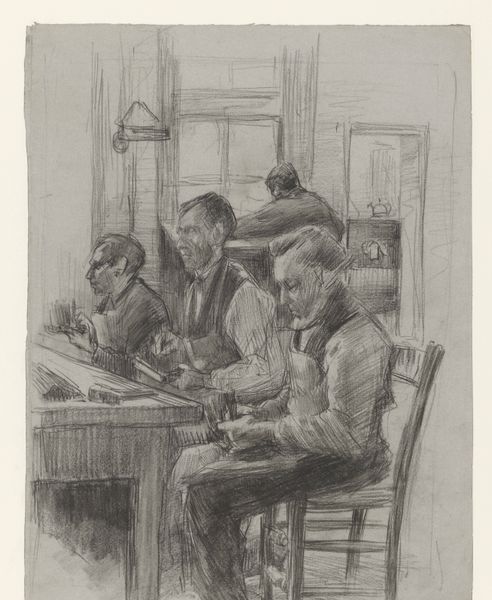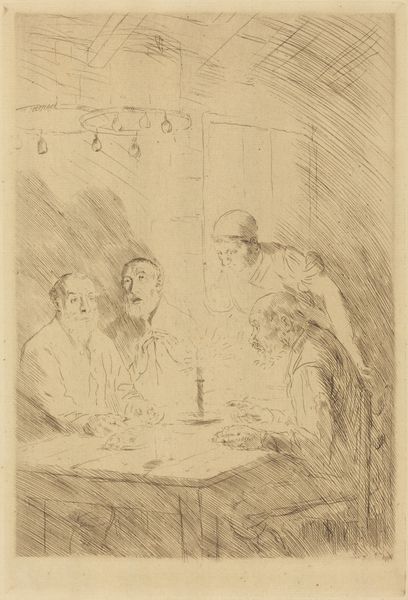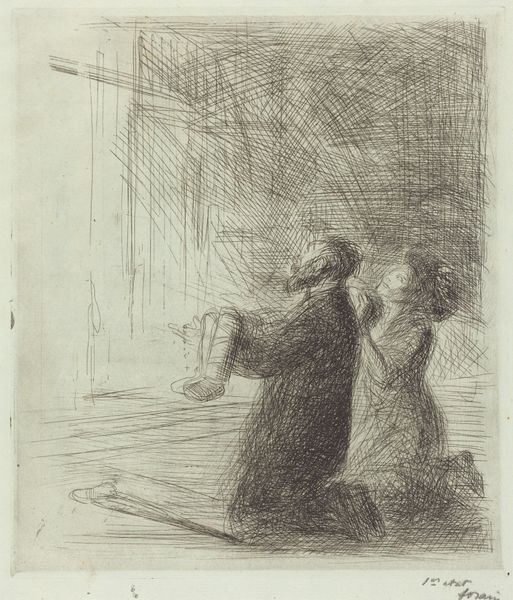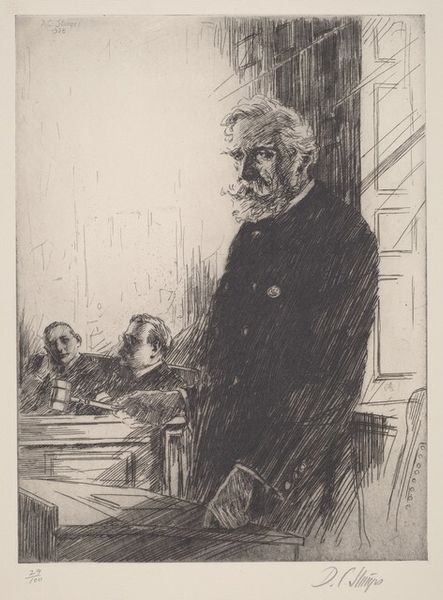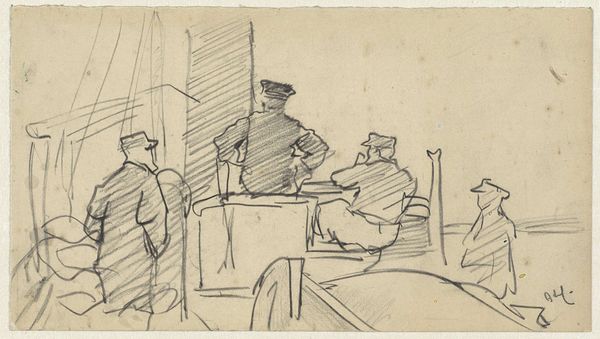
drawing, print, etching, ink
#
portrait
#
drawing
# print
#
etching
#
pencil sketch
#
etching
#
figuration
#
ink
#
line
#
academic-art
Dimensions: 12 x 9 in. (30.48 x 22.86 cm) (plate)16 x 12 15/16 in. (40.64 x 32.86 cm) (sheet)
Copyright: No Copyright - United States
Curator: Let's turn our attention to "The Judge," an etching created in 1928 by Dwight Case Sturges. You immediately notice the severe lines intersecting the composition. What's your initial take? Editor: Austere. Intimidating. The hatching definitely amplifies the inherent power dynamic at play here. You have this judge dominating the foreground with these ghostly, observing figures relegated to the background. Who exactly holds power? Curator: It's tempting to focus on the subjects, but observe how Sturges creates such dimensionality using purely linear marks. Notice how the density of etched lines defines the contours and mass of the figure, especially the folds in his robe and the turn of his head. Editor: And those cancelled lines slashed across the etching feel disruptive, even aggressive, but you can see that it was an intentional printing process. The subject isn't untouchable but instead literally scratched out of this history. How can we be sure that justice is being equally served? What is being obscured or concealed? Curator: This disruption, this surface intervention, is an intriguing formal paradox. We read the judge as solid and commanding but he’s graphically undone and rendered nearly invisible in his seat of authority. The material process actually undercuts the figure's representational power. Editor: I'm drawn to the gaze of those two figures in the background. They have their own power here. We see the two figures seated behind him who observe or challenge this singular authority figure from the shadows of justice, where the terms and conditions are written in small print. I also want to know the social climate of 1928. The Great Depression was just on the horizon. Were issues of socioeconomic and political justice on the people’s minds at the time? Curator: This artwork presents viewers with some intriguing formal dichotomies and tensions, not only conceptually but also materially and physically. Editor: Yes, I’m compelled to wonder how this justice is not universally blind here, where power has been consolidated for some at the direct expense of others. What does the act of cancellation mean within systems of inequity and justice?
Comments
No comments
Be the first to comment and join the conversation on the ultimate creative platform.
